Sandy Allen is a reporter and writer. They live in upstate New York and they often go into New York City to run errands and go to meetings. But when they go out, finding an accessible bathroom can be a challenge.
For context, Sandy is nonbinary and transgender. In terms of looking “male” or “female,” Sandy lands somewhere in between. And so public restrooms always present a dilemma. In women’s rooms, people look at Sandy funny or say mean things. But Sandy is often too afraid to go into men’s rooms. It can feel risky and exhausting to navigate these two bad options.
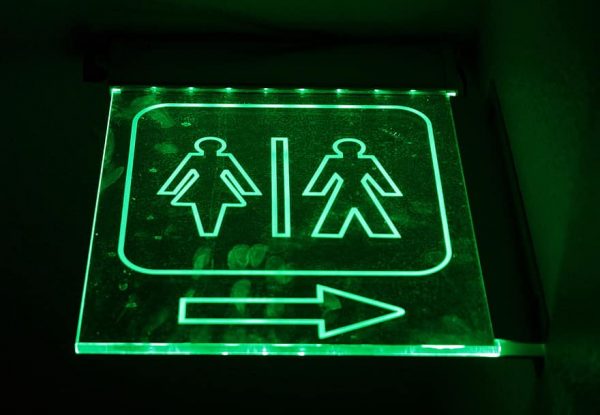
For many transgender, non-binary, and intersex people this is the norm. Some folks choose to risk the stress and sometimes physical danger that can come with entering bathrooms that are segregated by sex. Others choose not to. Instead, they hold it.
Over many decades, this kind of bathroom-related anxiety has been a reality for lots of different kinds of people, not just trans people. Because ever since their invention, public bathrooms have been sites of conflict about who’s included in public life, and who’s excluded.
The Vile Influence of Men
Before widespread indoor plumbing, public restrooms didn’t really exist. Instead, people used the privy, which was basically just a hole in the ground, sometimes with a little outhouse style building. By and large, privies were not segregated by sex. Nor were they segregated by class. Terry Kogan, a professor of Law at the University of Utah and one of the country’s leading experts on the history of sex-segregated bathrooms, says that it wasn’t until the mid-1800s that bathrooms moved indoors.
“Beginning in the late 1840s and 1850s, cities began developing municipal works, waterworks and sewerage systems that actually could accommodate indoor water closets. So once that came about, the outdoor privy was replaced by indoor water closets,” says Kogan.

At first, it was only the very wealthy who could afford this latest in plumbing technology. Having a bathroom inside your house was a luxury. But gradually indoor water closets became more widespread. And as they moved into the public realm, they entered a world that was at the time shaped by a very popular idea called the “separate spheres ideology.” The idea was that women belonged in the home and that men belonged in public spaces and that allowing women into the public sphere was to be risky because, given their “weakness,” they could become contaminated by the vile influence of men.
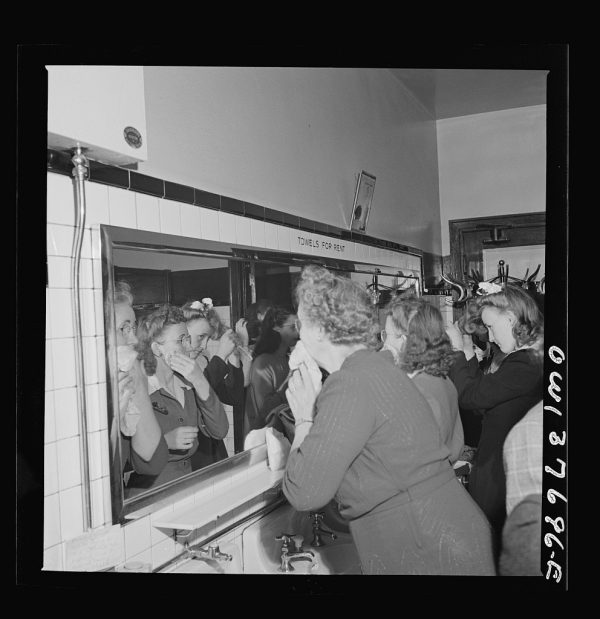
The reality of course was that women were not weak, and they also had never been entirely confined to the home. In the early 19th century, more women than ever were getting paid work and getting involved in civic affairs. But still, American building designers faced a strange paradox: how to create public spaces that both accommodated women but still kept up the ruse of women being relegated to the home.
The solution they came up with was to segregate public space. They designed ladies-only train cars, ladies-only dining rooms, and ladies-only waiting rooms. These spaces were often decorated to look very domestic, with the sort of sofas and wallpaper and drapery you’d see in an upper-middle-class living room. And over time, these women’s spaces became a fixture of public life across America. That meant when toilets eventually moved inside, they were also segregated by sex.
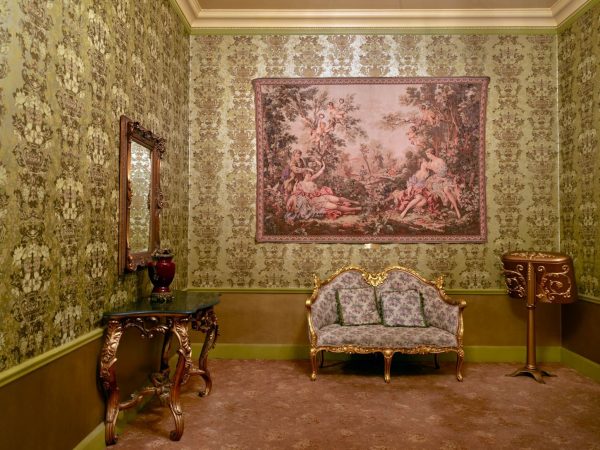
Panic! At The Bathroom
As the 19th century went on, society started to desegregate the sexes. But even as men and women started mixing more, segregated bathrooms remained — a vestige of the ideology that once insisted that men and women couldn’t share public space at all. One of the reasons that segregated bathrooms have proved so enduring is that these separate facilities were actually codified into law. The first laws were passed in the 1880s, and they had to do with women workers in factories and how they needed a protected space where they could rest.
But the history of public bathrooms isn’t just about who is seen as worthy of protection. It’s also about who is seen as unworthy.
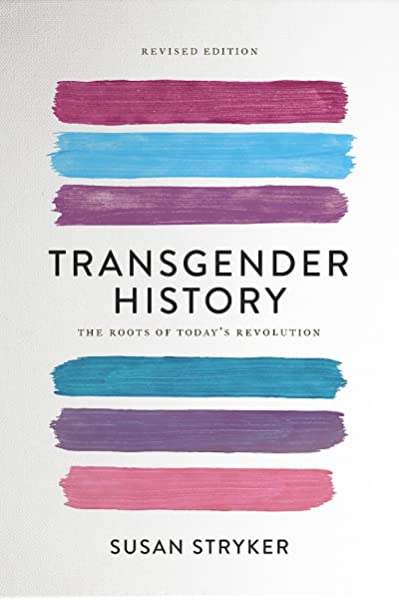 There have been many waves of panic and resistance to new people moving into the public sphere and needing accommodation. And a focus of that panic has often been… public bathrooms. “Pretty much every decade there’s been some controversy about public toilets,” says Susan Stryker, professor and author of Transgender History: The Roots of Today’s Revolution. Stryker says that for as long as we’ve had public restrooms, we’ve had battles about who belongs in them and who doesn’t. She thinks we fight about bathrooms because they’re very charged spaces. “It’s like we have all these taboos around waste and elimination and privacy and smell,” explains Stryker, “it’s very difficult for people to think rationally about some of these things. We just react at an emotional level.”
There have been many waves of panic and resistance to new people moving into the public sphere and needing accommodation. And a focus of that panic has often been… public bathrooms. “Pretty much every decade there’s been some controversy about public toilets,” says Susan Stryker, professor and author of Transgender History: The Roots of Today’s Revolution. Stryker says that for as long as we’ve had public restrooms, we’ve had battles about who belongs in them and who doesn’t. She thinks we fight about bathrooms because they’re very charged spaces. “It’s like we have all these taboos around waste and elimination and privacy and smell,” explains Stryker, “it’s very difficult for people to think rationally about some of these things. We just react at an emotional level.”
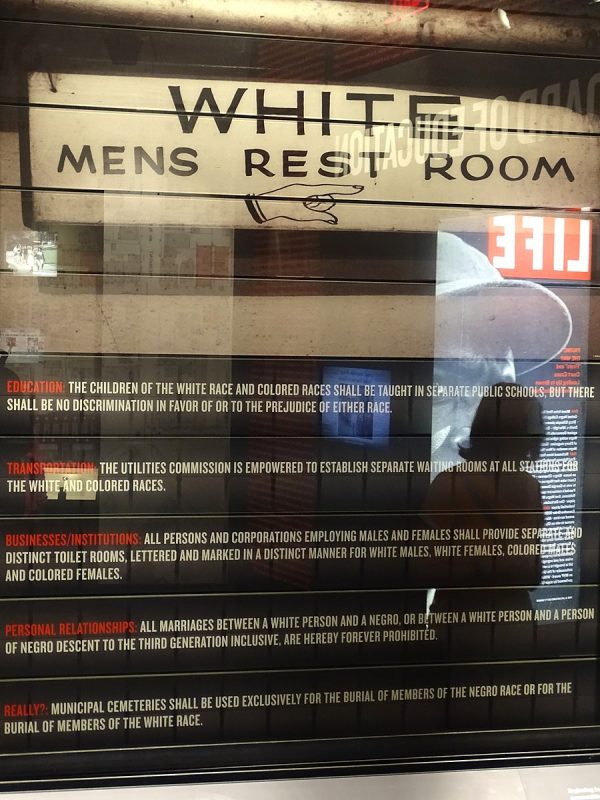
Stryker says, pick a moment in 20th century American history, and chances are there was some sort of freakout about a group of marginalized people using the bathroom. In the years after WWII, more visible gay and lesbian communities began to emerge — and there was panic about gay male sex in public restrooms. By the 1950s and 1960s, activists began challenging codes of racist segregation in the Jim Crow south — and this included challenges to racially segregated bathrooms. Bathroom anxiety even played a role in the fight against the Equal Rights Amendment in the 1960s and 70s, with right-wing opposition invoking the idea of unisex restrooms as a way to generate opposition to the ERA. Later, during the AIDS crisis of the 1980s, people feared they could get the illness from using public restrooms. Which brings us to the bathroom panic of today: a moral panic around trans people in public restrooms.
The New Target
This debate about trans bathroom access became a big national story a little over five years ago. You had ordinances — or proposed ordinances — in states like North Carolina and Texas, which attempted to restrict which bathrooms trans people could or couldn’t use.
Terry Kogan thinks this surge in anti-trans bathroom activism had something to do with the Supreme Court allowing for gay marriage in 2015. After that happened, all the conservative money and energy that had gone into that fight had to find a new target. “Conservative energy coalesced around trans people and their desire to use the restroom that accords not with their birth sex, but with their gender identity,” explains Kogan.
The irony is people on both sides of this debate claim that they’re on the side of safety. One side argues that trans people should be safe in the bathroom that’s consistent with their gender identity, while the other side claims that women shouldn’t be attacked in the bathroom by cross-dressing men.
But as Prof. Stryker argues, this notion of a predatory cross-dressing man is complete fiction. In reality, if you look at the numbers: it is trans people who are at the greatest risk of being attacked in public restrooms. According to Terry Kogan, roughly 70 percent of trans people have experienced either verbal or physical abuse, with Black trans women, in particular, experiencing even higher rates of abuse.
A Little Imagination
But even though we take it for granted that most public restrooms are segregated by sex, they don’t have to be this way. And as the debates around trans bathroom access began heating up, an architect named Joel Sanders began thinking about exactly that. Joel had long been interested in bathrooms—as a gay man during the height of the AIDS epidemic, he remembered how public restrooms had become a flashpoint back then. And he was especially interested in the lack of attention his fellow architects seemed to pay those spaces. He says bathrooms are considered the ultimate functionalist architecture, spaces that don’t require much creativity or thought.
But the reality is that bathroom design does matter. Whether architects realize it or not, when they design public bathrooms, they’re deciding who’s included and who’s excluded when it comes to fully participating in public life.
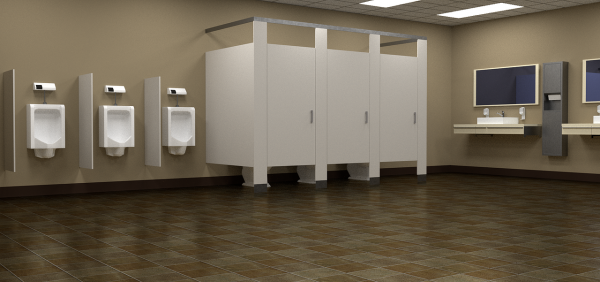
Sanders figured, if they put their minds to it, architects could reimagine bathrooms entirely, so he reached out to Susan Stryker to figure out a solution. As they talked, they both realized that an architectural redesign could help not just trans people, but everyone. Better bathrooms could benefit people with medical issues, or parents with young children, or people who need space to practice certain religious rites, or people with physical disabilities.
Sanders also began speaking with Quemuel Arroyo who used to advise the New York City Department of Transportation about accessibility issues and uses a wheelchair. Arroyo told Sanders about all the ways public restrooms fail people with disabilities. “So many of these ‘accessible’ bathrooms still don’t get it,” he says. “And they don’t get it because they’re being designed by people who don’t understand accessibility.”
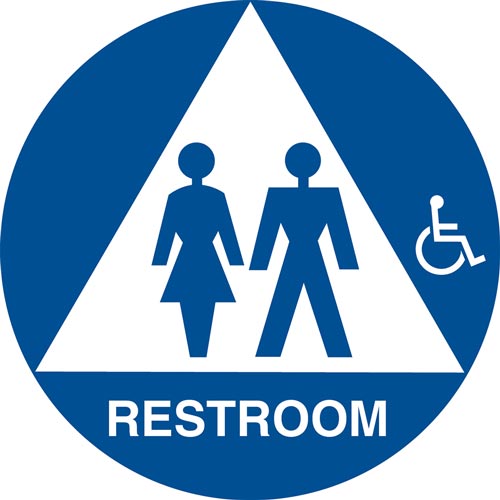
Joel Sanders kept imagining what an actually inclusive public bathroom might be like. He kept talking to Susan Stryker on the phone and the two began meeting up, and then collaborated on an academic paper, and they ended up receiving so much interest that they founded an initiative called Stalled!
The Stalled! project would tackle not merely the problem of trans bathroom access, but would also totally reimagine the bathroom so that it works way better for way more kinds of people.
But Susan and Joel quickly hit a big snare: the code. Right now, for public buildings over a certain size, the building code mandates that you must build what are termed “separate facilities”, meaning: a women’s room and a men’s room. Even if some architect designing an airport or museum really wanted to just build a bunch of single-user bathrooms, instead of a men’s and women’s room, they’re not allowed.
Stalled!
The Stalled! team ended up bringing on Terry Kogan, the foremost thinker about bathroom laws, to help them navigate the code issue. Terry and his colleagues began spearheading a legal appeal to change the code. And the architects got to work totally re-envisioning designs for certain public bathrooms — like ones for elementary schools and ones for airports. In totally reimagining the airport bathroom, the first thing the Stalled! team did was get rid of the idea that the bathroom is a room with a door. Instead, they imagine the bathroom, conceptually, as an extension of the public space, like a big lounge. The space is then divided into three “activity zones”: grooming, hand washing, and relieving oneself.
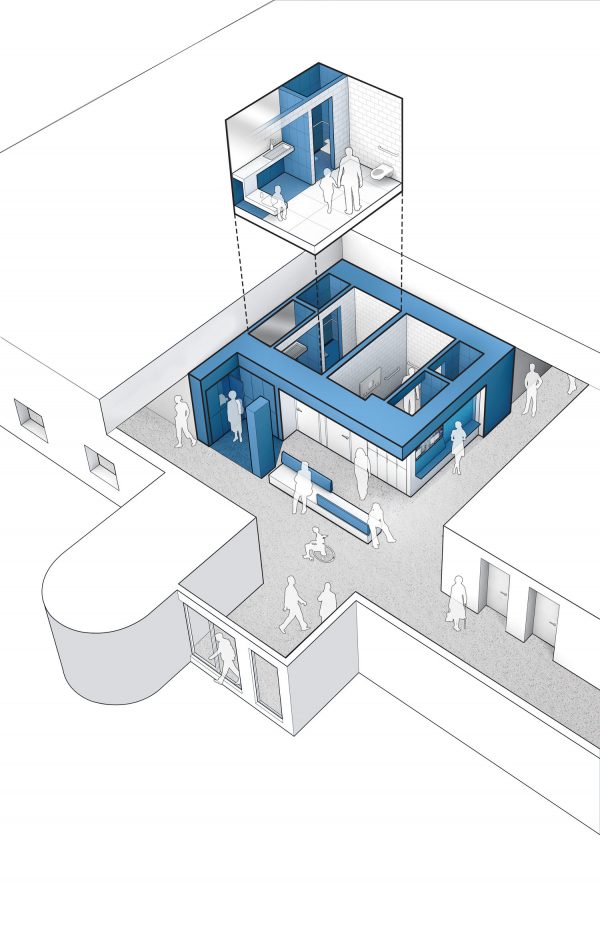
Instead of individual sinks, Stalled! proposes a water wall with a “splash plane” that’s angled slightly away from the user and a grooming station at multiple heights to accommodate children, the elderly, people in wheelchairs, and people of different heights. The stalls would be built in different sizes, with some larger ones to accommodate wheelchairs, and would have floor-to-ceiling walls and doors for maximum privacy.
The Stalled! bathrooms also include other details that would make them more welcoming for all kinds of people, like foot-washing stations for Muslim people and floor materials that make the space easier for people with vision impairments to navigate. All of these designs are more inclusive — and they can also be safer. Because rather than being divided into two or sometimes three groups — men, women, and disabled — in this reimagined bathroom, all people can keep an eye out for each other in a common space.
While the Stalled! project had come up with new designs to make bathrooms better, nothing could actually get built until the building code changed.
The International Building Code, or IBC, is governed by a group of builders, architects, city planners, and other design experts who together make decisions that hopefully keep the public safe. They set rules about stuff like light switches and handrails. The group gets together every three years to agree to changes to the code. And so Terry Kogan and the other lawyers involved with the Stalled! effort appealed to the IBC to change the line of code requiring “separate facilities.”

They prepared their appeals to the committee in the lead-up to the big meeting about amending the code, in the fall of 2018. Then came a long wait until the committee’s decision finally became public this spring… and … they won!
This development is a major step towards having more inclusive bathrooms in the world, but with some caveats. For example, it will take some time for that new code to actually be adopted by local governments, and governing bodies at the city and state level could also purposefully choose to ignore this particular update.
But Susan Stryker and the other members of Stalled! hope that their designs are recognized as not just an improvement for trans people, but for everyone. As Stryker says, “What I feel is so elegant about the Stalled! public toilet project is that at some level… it doesn’t matter what most people think about trans people. It doesn’t matter if you feel like you should accommodate people with disabilities… The design of the space just solves the problem.”



Comments (31)
Share
Thank you for as usual excellent reporting!
I’m slightly disappointed though in how amerocentric this episode was, only briefly mentioning in passing that signage differs geographically. Surely there is more to be learned from look around in the world?
In particular I would have loved to hear more of the history of how the US has come to have the flimsy partial-height stalls be the norm.
Would also have liked to hear more discussion of cheap ways of converting existing separate but adjacent facilities into gender neutral/more inclusive ones vs the presumably more expensive remodeling requiring to achieve separate “activity zones”.
I believe that the half door stalls came from fears of people having sex or doing drugs in bathrooms, so wanting a way to “peek” in to see what was happening.
I am an architect in Seattle at Malum Architects and we have worked with local jurisdictions and schools in the Seattle and Portland areas to design and build gender inclusive bathrooms schools in the past couple of years using the Stalled designs as inspirations for both the planning and signage. https://www.mahlum.com/projects/grant-high-school-modernization/
Love the podcast!
I was at a pub that had two bathrooms labeled:
“This restroom has a stall and a urinal”
And
“This restroom has two stalls”
Not sure how well that holds up for vision impaired or non-English speakers, but was a straight forward solution.
My first introduction to a universal bathroom was several years ago visiting the Massachusettes Museum of Contemporary Art (). I walked in to the large common area with lots of sinks on one side and fully walled stalls or toilet rooms with a small sink in each stall/room on the other side. After the mental twist, I’ve thought a lot about that in the years since. It gets my vote.
The theme of 99pi lately has been kind of political. Which is fine, I like it every once in awhile, but 99pi has always been an escape from all the politics for me. I just like those podcasts that don’t have to do with anything I know about, it just spreads light on a subject I’ve never heard much about, like The Infantorium, Cautionary Tales, Play Mountain, Atomic Tattoos and probably my favorite ever The Great Bitter Lake Association.
I just miss the podcasts that I knew nothing about before listening.
Nothing against talking about issues that matter to you guys, I’m all for it, I’m just saying, the magic of listening to a podcast that I really learned a lot about something random has been fading.
Still love the podcast, the info you give on topics like this that I do already know about is great. Thanks guys.
Out of curiosity, I went back to the first year of this podcast and found episodes on statues, flags, city parking, public/private spaces, and maps. I know “everything is political” is a cliche, but design, and especially architecture, is inherently political and this podcast has never shied away from it.
You’re not alone, I have the same feelings, and find solace in certain podcasts similarly. I’ve been listening to 99pi for 5 years and won’t stop, and I’m not complaining, but my state of mind when I hit play has definitely morphed. It’s just moved from my “joy of learning” column to my news/political column.
I’m curious as to what women think about these new toilets. My guess is that a large majority of women will complain about having to share toilets (as in the room) with men.
Whether rightly or wrongly , women are of the opinion that men are less clean and care less about hygiene than men do. They are almost certainly correct too.
Can it also be that the toilet (as in room) has a deeper psychological significance to women that it does to men? As a man, it is purely a place to engage in bodily functions and wash my hands. I would not be surprised if the toilet has an element of «the safe space» or «the male-free space» about it. Women get terribly upset about men in women’s toilets but men are not at all phased about women in men’s toilets.
On a final note, 10-12 years’ ago, when changing-boards were not at all common in men’s toilets, I was often obliged to change my infant daughter’s nappy in women’s toilets as that was where the only changing-board was. I received not one word of a complaint or a harsh word (it wouldn’t have bothered me anyway) but I suspect that the restaurant or café owner got many an earful. It seemed to me that an infant child stinky nappy was the only legitimate passport for a male into a protected female space.
I wonder if this design incorporates urinals. I realize that they presume anatomy which can take advantage of this mode of nicturation, but using a stall and a toilet seems like a step backwards (at least in terms of time and water usage) if someone just needs a quick pee. Urinals also enable a pee without touching anything these days, including a stall door and handle.
I remember seeing a unisex bathroom design where the urinals would be at the back, behind a partition you could walk around (so no door to touch I think), out of sight from people using the stalls in the front. There are even female and unisex urinal designs.
From the episode: “The other side says that women shouldn’t be attacked in the bathroom by cross-dressing men.”
Umm, I think they say that women shouldn’t be attacked anywhere by anyone, and that allowing broader access to women’s bathrooms might increase attacks on women. I wonder if you purposely phrased it as cross-dressing men so that you could frame the dangers to women of allowing more people to use women’s bathrooms as only coming from cross-dressing men and thus, according to Prof. Striker, as non-existent: “That fear of a predatory cross-dressing man is a fiction”
For there are certainly reports of non-cross-dressing men assaulting women in bathrooms, so the question isn’t whether allowing bathroom use by gender identity increases assaults by cross-dressing men but by men as a whole. And that’s an open question, especially, as you indicate at the end of the program, we don’t expect women to always wear dresses anymore.
To be clear, I think having people use the bathroom that corresponds with their gender identity is, on the whole, a social good, but it probably does come at a cost to some people. Ignoring that decreases your credibility.
I want to echo what Zane said a few comments above.
There has been such a political slant lately, I guess I just miss your old podcast.
In particular; flags, stamps, challenge coins, teddy bears, cathedrals, lightbulbs, sandhogs, stethoscopes pinball machines and fortune cookies.
I listen to podcasts to get away from the news not be reminded of all the bad stuff out there. Maybe you feel like you have to do your part? I’m pretty sure I can guess your politics without saying the quiet part out loud- you guys have been clever enough n the past insert in here and there in some cute and cheeky ways.
Do you want to do your part? You already are doing your part by entertaining us out here, calming us down and taking our minds anywhere but our four walls or our burning cities or election agita. There is nothing wrong with that.
Bring back the quirky, fun tone of the99pi we all (right and left) love.
It’s been a little over 1 year since I moved to Copenhagen, and I can’t remember ever seeing a gender-segregated restroom around here. They look just like restrooms elsewhere in Europe or America, except for the signage and the lack of urinals.
Wheelchair access isn’t great, though.
In about 2018, I encountered my first Boston-area example of multi-person bathrooms being converted to all-gender. It was at American Repertory Theatre in Cambridge. I don’t remember the iconography (and I can’t find a picture of it), but I do remember that they replaced signs saying “Men” and “Women” with ones that read “Stalls and Urinals” and “Stalls Only”. It was, at the time, a little slow to catch on, with most female patrons still forming the traditional long queue outside the “Stalls Only” room at intermission. Still, if ever there is pressure to break out of outdated gender rules, a 15-minute intermission with a long bathroom line is it. My (cis-female) wife still complains about Fun Home on Broadway, a pointedly queer show, but one where women ushers actually stopped women patrons from rushing into the (line-less) “men’s” room to pee before the show started.
It seems so novel, yet it’s been the norm in Sweden for years. You all need to travel more.
I’m wondering about one thing mostly. Periods. Many women get them, and they tend to make going to the toilet… messy, shall we say.
Going to wash icky hands in a women’s toilet is one thing, but I would be rather uncomfortable washing the same hands in an all gender bathroom, and I’m not sure the men would like it either.
I’m wondering if this has been considered at all
Yeah, I was wondering the same. Especially with things like diva cups and such! Seems like it’s and easier and better solution to put the sink in the cubicle? That seems like a massive oversight somehow
I came here to say that. As a former fibroid sufferer (there are millions of us) there are often bleeding disasters, and we need to be able to wash in privacy -not just hands but often legs and sometimes underwear or clothing. Movie theaters used to have sinks in stalls, and 2 of the bathrooms at PHL had them and they made life so much easier. Not every stall needs them, but having a few would be helpful.
I feel like menstruating people need to be included in design input, not just people born male.
I am a huge fan and collector of Toilet signs! :) So this episode was really quite interesting to me …
I am collecting creative toilet signs for over 15 years, but I have to confirm, I have not met “non sex-segregated” toilets signs yet…
I’ll keep an eye for those now. If you have something to add – or to observe from the creativity around the world – here’s my collection:
https://www.facebook.com/hajzliky
Great episode! There was an inaccuracy in the description of the episode in my podcast app, though. There was never an ordinance passed in Charlotte that “attempted to restrict which bathrooms trans people could or couldn’t use.” To the contrary, the city of Charlotte passed a nondiscrimination ordinance for public accommodations that was inclusive of trans people, and the state of NC responded with a law, commonly referred to as HB2, which effectively overturned it. HB2 — the state law –banned people from having the choice of using whichever bathroom matched their gender identity.
I came here to say this. I hope they make some sort of correction for this. Charlotte is a pretty progressive city. Unfortunately, the legislature in Raleigh decided to inject themselves in local issues to score political points with their base. So much for small government, right?
Great podcast, interesting and thoughtful as ever.
One group who still don’t have good – if any – access to appropriate public facilities are those who rely on continence products. That is, adult diapers and other similar aids.
These products need to be changed, regularly or irregularly. That is a great challenge especially for those who don’t stand, which can often be related to why they are using continence products.
Many users need to lay down to be changed. That requires a bench or table… or the floor of a public bathroom. It should come as no surprise that the floor of a public bathroom is not an ideal option.
My 14 year old daughter is too big for a baby change table, and too mature to be changed without privacy. She has profound intellectual disability, uses a wheelchair, and likes to explore her environment by touch. She also likes to put her hands in her mouth. Restroom floors are absolutely not an option.
Her need for changing facilities is the biggest restriction on where, and for how long, our family is able to go out.
I empathise with your gender diverse guests and their frustration at being limited by lack of personal care facilities that they can use safely. It is, literally, a sh*t problem.
Interesting, but I wish you’d tried to research more the origins of what seems to be the uniquely American issue of having such a large gap on all bathroom stalls (and I don’t mean the one between the floor and the door, but between both sides of the door and the stall walls) so that in fact anyone trying to use a bathroom stall only has what I’d call quasi-privacy. Since other places in the world manage to have private bathroom stalls, it can’t be a purely functional issue, so why do we persist in having bathroom stalls where you can be seen through the cracks of the stall, or see others outside of the stall? Are there only a few places making bathroom stalls for America? Are they all copying each other? I wonder how many more women would feel more comfortable with unisex bathrooms if the stalls had actual, real, genuine privacy inside and the urinals also had a privacy partition.
I (assume?) the rest of the ladies are like me and try to ignore the gaps and pretend like they’re not there and not look in them from the outside, and check the bottom gap for feet when you’re seeing if they’re occupied, but deep down, you know they are there because you can clearly see out of them from the inside and it frankly does make things weird when considering how you’d feel about a unisex bathrooms.
Very interesting and excellent as always.
Personally, I am for shared bathroom spaces. With privacy in the appropriate space being the most important part. I share your other commenters’ opinions around the gaps in American bathroom stalls.
However, I have to say one thing. In search of inclusivity at the cost of upsetting the masses is something that also needs to be considered here. This didn’t come across in the show. This is a very complex equation that clearly needs to meet the needs of ‘all’ users and skew to the majority of users.
There will be lots of ‘men’ and ‘women’ that assign to binary genders that will not like this concept. Some specifically against this because of the search of inclusivity. A fine balance. One of the biggest challenges that projects like this will face is cost. Re-designing spaces in the way that ‘Stalled’ is proposing is not cheap and most building/facilities will offer restroom services not for a pleasant experience but because they are required to do so. Mainly driven by the law. I hope this changes in time as i hate using public bathrooms.
Europe is a lot more advanced as you pointed out in your show.
Keep up the good work.
Women actually won the right to sex segregated restrooms. It is not a holdover from excluding women in real life. It was something women campaigned for. Way to erase female history.
While I do agree about handicapped access, I wonder how other than euro-centric cultures will take this. Specifically middle eastern rooted cultures where the genders are separated for many activities, not just restrooms.
For non-binary people you use the one for which you’re dressed, what’s the issue? I have male friends that are barely over 5 ft and female friends that are well over 6 ft. You can’t tell gender by height or size. I believe the issue is when someone is dressed as a woman (regardless of how they identify) uses the men’s restroom and vice versa. As long as restrooms are multi person affairs I don’t see certian cultures in this multicultural society known as America accepting this.
This appears like we are excluding one minority to accept another minority.
There’s an app out of Australia called Where is Public Toilet for show where and what types of 🚻 users they are for etc.
My friends and family from Denmark are always confused about the gap in public restroom doors. They are also confused about why gender is such a big deal with restrooms
Excellent work. The work of Stalled made some good waves in New York via the AIA Inclusion Committee. The only question that was missing is: “What about the 40, 50, 80, 18, 8-year old who is not comfortable having persons of other genders in their grooming space?”
It points to the inherent conundrum: until society is fully accepting of an inclusive/mixed bathroom, buildings will have to have segregated facilities. So should we now build for a ternary system: inclusive, male, female? That’s just as segregated, isn’t it?
The segment with Seb Choe was chilling. A male-bodied person in the women’s locker room, refusing to leave. Just sitting there smugly and then painting themself as a victim. I looked up Seb’s photo and they tower above all of their coworkers. Any average woman who enters the locker room—who hasn’t had the luxury of reading up on the latest gender ideology—will see Seb as a large and intimidating man.
It is one thing to identify a certain way, but in shared spaces, we must always respect the most vulnerable. In this case, the most vulnerable person was not Seb but the frightened woman who wished to use the sauna in peace. You cannot circumvent the fact that violence committed by male-bodied people against women is quite common. If you have any decency you won’t give poor ladies in the locker room a heart attack for no reason. If you are AMAB nonbinary or gender fluid, it’s only fair to use the men’s room.